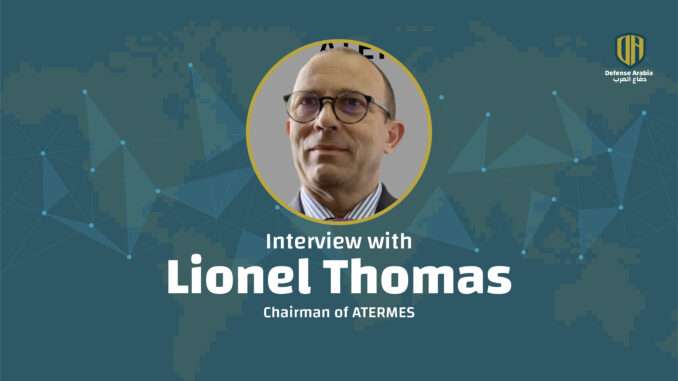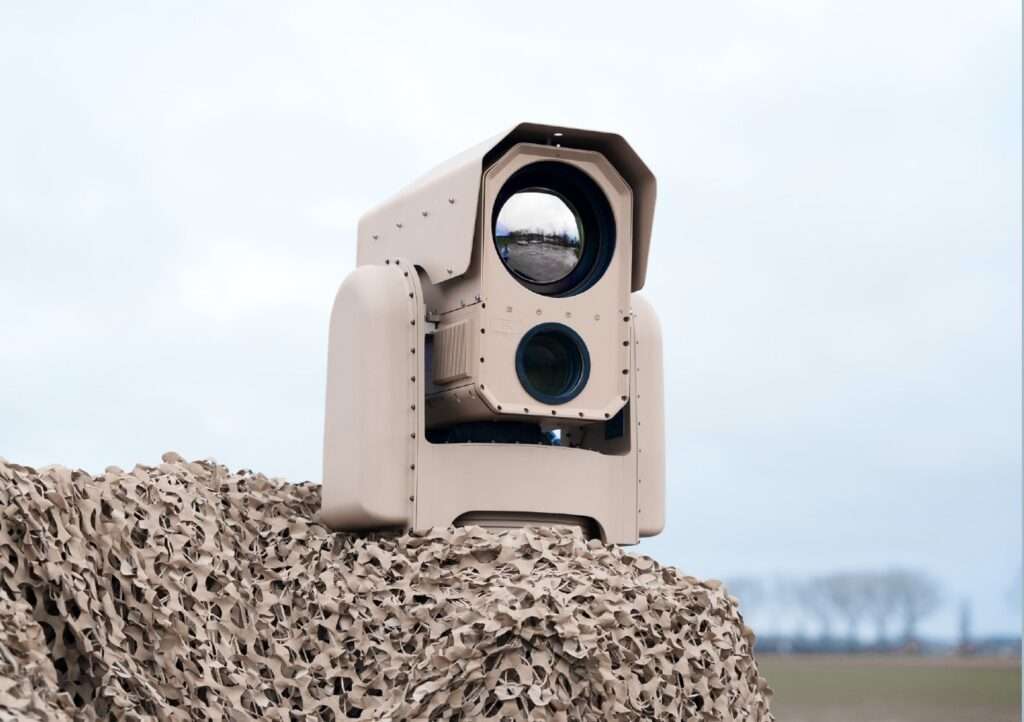
As regional security challenges grow increasingly complex, technological innovation remains at the heart of modern defense strategies. At IQDEX 2025, ATERMES reaffirms its commitment to supporting Iraq and the wider Middle East with cutting-edge surveillance and defense solutions. In this exclusive interview, Lionel Thomas, Chairman of ATERMES, shares insights into the company’s strategic vision for the region, its latest technological advancements, highlighting the flagship SURICATE system, and the vital role of local partnerships in delivering mission-critical capabilities. He discusses how ATERMES integrates AI-driven systems to enhance border control, infrastructure protection, and smart city initiatives, while paving the way for sustainable growth and regional cooperation. Through this conversation, we explore how ATERMES positions itself as a trusted, long-term partner for national authorities seeking security, sovereignty, and technological independence.
1. Could you tell us about ATERMES’s involvement in IQDEX this year? What motivated you to participate in this event?
ATERMES is proud to be taking part in IQDEX 2025, once again alongside our trusted local partner IST (Information Systems for General Trading and Commercial Agencies). This marks our second consecutive participation, and it reflects our growing commitment to Iraq and its national security priorities. IQDEX is a key platform for engaging directly with institutional stakeholders, showcasing our latest technologies, and reaffirming our ambition to support Iraq with high-performance, mission-oriented solutions. Being present on the ground also enables us to better understand the needs of our customers and build sustainable, long-term partnerships.

2. What key products or services is ATERMES showcasing at IQDEX, and how do they align with current market trends in the region?
This year at IQDEX, we are presenting our flagship surveillance system SURICATE, an advanced multispectral detection solution equipped with embedded Artificial Intelligence and edge computing. In response to the increasing demand in the region for integrated, autonomous surveillance capabilities, we are also unveiling a new combined configuration that links SURICATE with radar technology. This integration enables long-range detection by the radar, which then cues SURICATE to focus its sensors on the target. SURICATE’s embedded AI immediately classifies and identifies the object, providing rapid situational awareness. This setup aligns directly with regional needs in border security, infrastructure protection, and early threat detection.
3. ATERMES is known for its innovative solutions. How do you plan to expand your footprint in the MENA region?
ATERMES is actively expanding its presence across the MENA region through strategic partnerships, regional deployments, and the establishment of a permanent branch in the Gulf area which took place in 2024. This regional base allows us to provide agile support and ensure close proximity to our customers. Beyond commercial presence, we are exploring opportunities for local production, assembly lines, and technology transfer, with the objective of becoming a long-term partner to
national authorities. Our approach is grounded in cooperation and sovereignty—helping countries build local capabilities around our innovative technologies, especially in defense and homeland security.
4. How does ATERMES differentiate itself from competitors in the region? Are there any local partnerships or collaborations that are key to your success in this market?
ATERMES stands out in the market through two core differentiators:
First, our Artificial Intelligence is entirely developed in-house and specifically designed for the defense and security sectors. Unlike generic AI models, our algorithms are focused on mission-critical performance and situational awareness. We also give our customers the ability to customize and train the AI according to their own operational environments—offering a truly adaptive and evolving system that learns from local threats and behavior patterns.
Second, our software architecture is also fully developed internally. All data captured by our systems is processed using dedicated software solutions built by ATERMES, ensuring secure, optimized, and autonomous operation tailored to defense applications.
In Iraq, our ongoing success is closely tied to our strong partnership with IST, whose local expertise and network are instrumental in adapting and deploying our technologies effectively. This collaboration is a model of how we aim to operate across the region—with trust, continuity, and shared value.
5. Sustainability and smart technologies are critical topics today. How is ATERMES incorporating sustainability into its strategy in the region, particularly in relation to smart city and infrastructure projects?
Sustainability for ATERMES begins with intelligent design and operational efficiency. Our systems, including SURICATE, are energy-efficient, low-maintenance, and modular, ensuring a minimal environmental footprint while delivering long-term value. Our platforms also align naturally with smart city and smart infrastructure initiatives, offering features such as behavioral analytics, autonomous surveillance, and secure data processing—all of which contribute to safer, more resilient urban ecosystems. We are committed to supporting regional development strategies that combine security, sustainability, and technological independence.
6. SURICATE is one of your flagship products. Can you tell us more about how artificial intelligence is embedded within SURICATE and how it enhances its performance?
SURICATE is equipped with embedded, edge-based artificial intelligence that allows it to function autonomously and intelligently in real time. Once a target is detected—whether by SURICATE directly or via an integrated radar system—SURICATE’s AI instantly analyzes the object, performs classification,
and triggers alerts accordingly. This includes distinguishing between humans, vehicles, animals, or drones, even under challenging conditions such as low visibility or cluttered environments.
Unlike systems that rely on cloud processing, SURICATE’s embedded AI allows for instantaneous analysis and decision-making, ensuring faster reaction times and enhanced mission performance. Additionally, operators can train the system to adapt to specific environments or threat profiles, making it smarter and more precise with continued use.
7. Border control remains a significant security concern in the region. How does ATERMES tailor its solutions to address challenges such as illegal crossings, smuggling, and other security breaches?
Our solutions are designed to respond to the complex and evolving challenges of border control. Through SURICATE’s panoramic vision, multispectral imaging, and AI-based analytics, we offer early detection and accurate classification of suspicious activity—whether it be illegal crossings, smuggling, or unauthorized vehicle movement. Combined with radar systems, our platforms provide layered surveillance: radar offers long-range detection, while SURICATE delivers detailed visual confirmation and intelligent classification. The modularity of our systems also allows for fixed or mobile deployments, which is essential in adapting to various terrain and threat dynamics along border zones.
8. Given the strategic importance of border security in the Middle East, how does ATERMES work with governments and organizations to provide customized, effective surveillance solutions?
ATERMES engages directly with government agencies, integrators, and local partners to develop mission-specific surveillance architectures. Our process typically includes joint evaluations, field demonstrations, technical workshops, and ongoing support—ensuring that every solution is fully tailored to the operational context. We value long-term collaboration and are open to industrial cooperation models, including technology transfer, joint R&D, and training programs to build local autonomy over the systems we deploy. Our focus is on creating value not only through equipment but through knowledge, resilience, and trust-based partnerships.



Be the first to comment